The Fraser Mortuary Chapel, a grand monument that's 'one of the most splendid in Britain'
The Scottish revival architecture of Patrick Allan-Fraser in Arbroath includes the Fraser Mortuary Chapel, an extravagant creation he designed for the town cemetery. John Goodall takes a closer look; all photographs by Paul Highnam for the Country Life Picture Library.
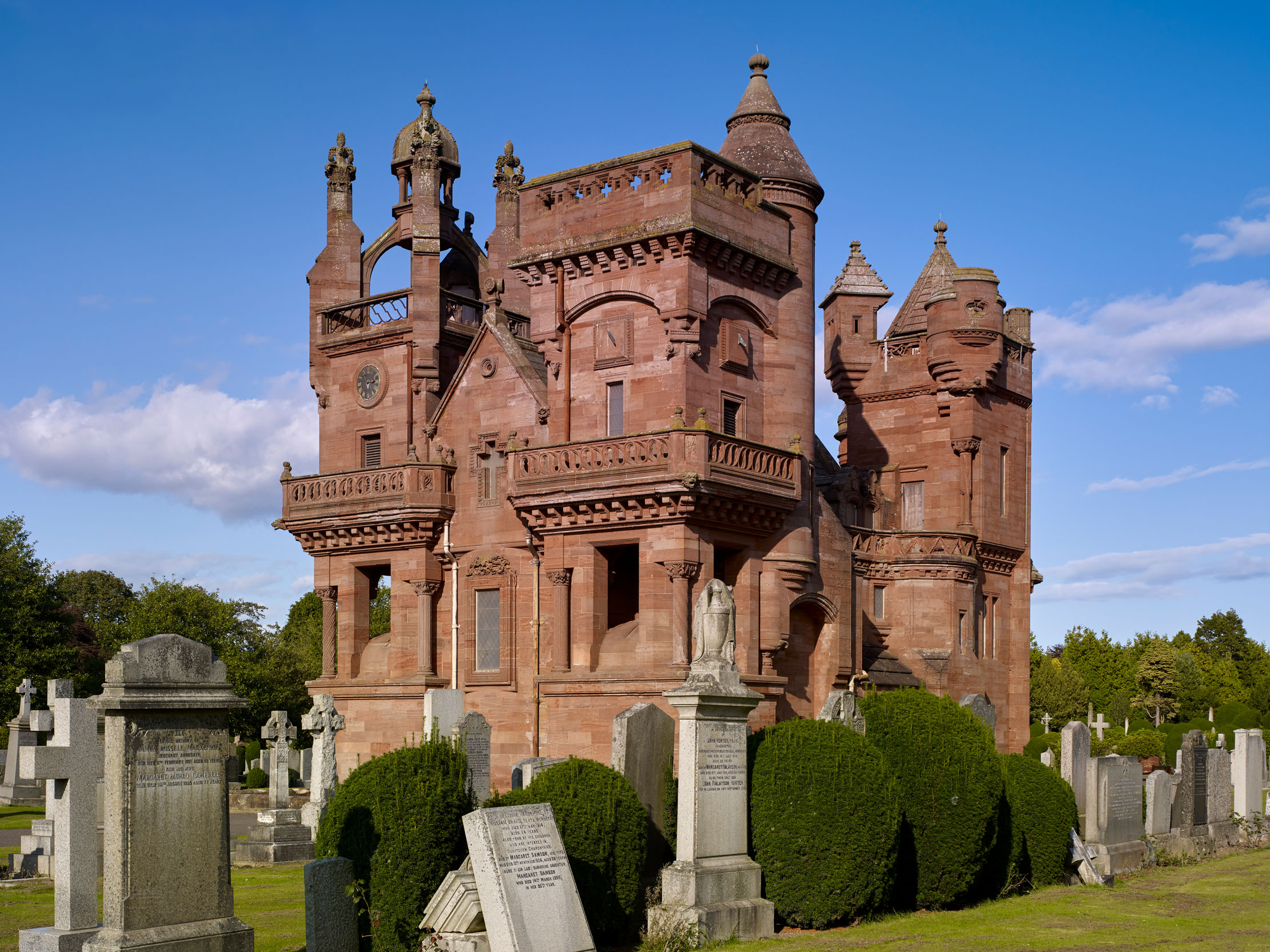

As did so many Victorian towns and cities, Arbroath struggled to find space for its dead. It was to address this problem that a new graveyard — the prosaically named Arbroath Western Cemetery — was laid out on the outskirts of the town in 1867. When Elizabeth Allan-Fraser, heiress of nearby Hospitalfield, died six years later, on November 23, 1873, it offered a relatively unconstrained site for her mourning husband, Patrick Allan-Fraser — a painter, architect and benefactor of the Arts whose remarkable life was described in this article — to create a very unusual monument and resting place for her, her parents and himself.
Allan-Fraser was firmly of the opinion that architecture should be functional. That probably made him reluctant simply to erect a grand funerary monument. Instead, over a period of nine years, from 1875 to 1884, he designed and constructed one of the most splendid mortuary chapels in Britain. It was conceived as the architectural centrepiece of the new cemetery and intended to be suitable for use in the funeral services of the dead of all Christian denominations. Incorporated within it are mausolea for two pairs of tombs, one for his wife’s parents and the other for himself and his wife.

From the exterior, the Fraser Mortuary Chapel forms a highly eclectic essay in the Scots Baronial style, an idiom that — inspired by the novels of Walter Scott — Allan-Fraser had already fulsomely explored over the previous 30 years in his architecture at both Hospitalfield and his shooting lodge at Blackcraig Castle in Perthshire. The chapel is also very thoughtfully designed, with detailing that expresses its dual character as a monument and building of religious purpose.
The chapel is exactingly constructed from locally quarried red sandstone and such fittings as it possesses are simple and robustly made. The most obvious mark of the superlative craftsmanship involved in its creation is the breathtaking display of architectural carving it preserves, much of it by one sculptor, James Peters. No wonder it was reported to have cost the fabulous sum of £20,000. For sheer bravura, its only British parallel is surely the Watts Chapel. Unlike that justly celebrated building, however, it is little known today, rarely open and presently disused.
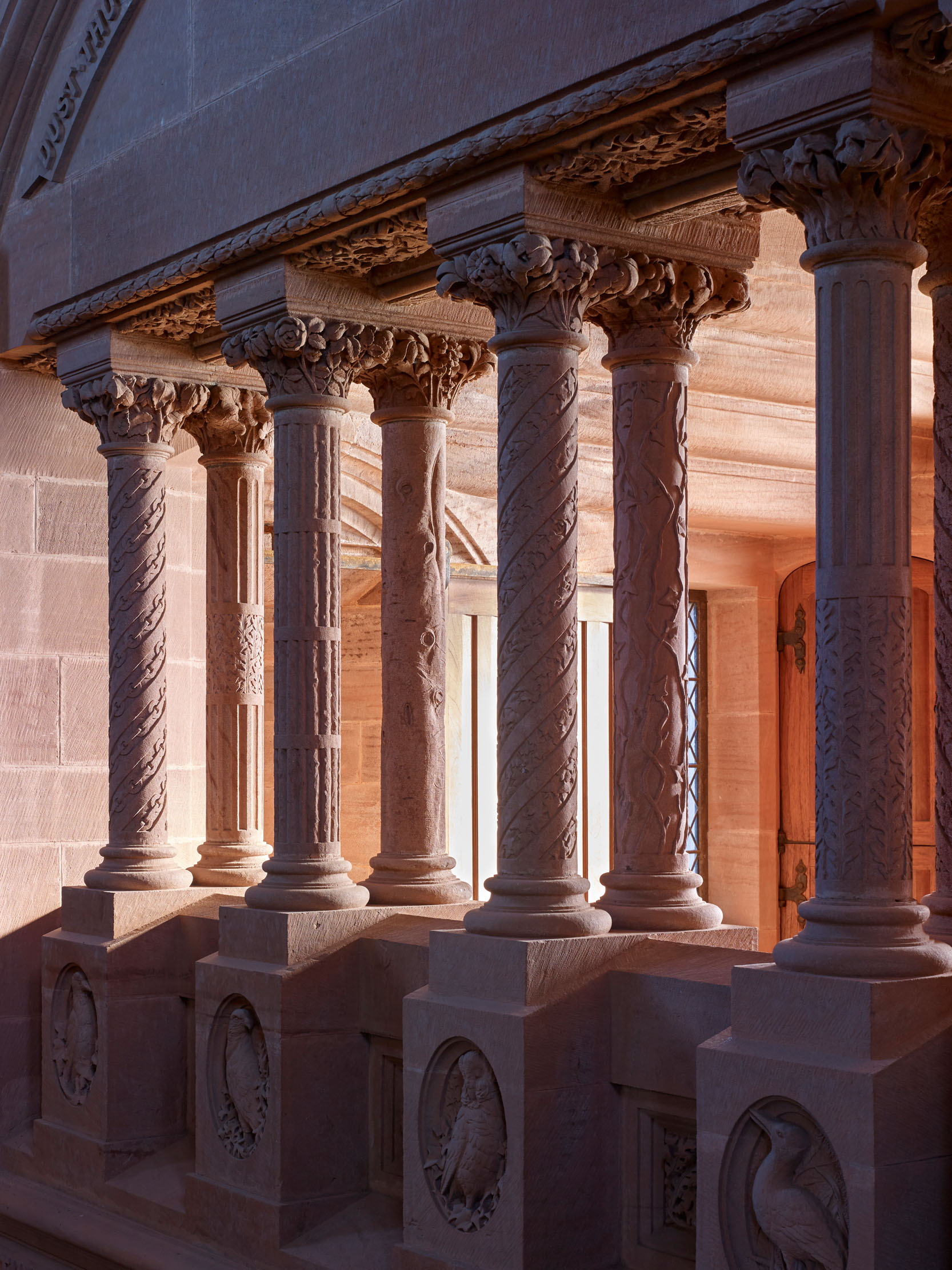
Allan-Fraser’s views on society, religion and architecture are well recorded and help explain some aspects of this outstanding building. They are set out in several publications, including a rambling book of nearly 600 pages entitled An Unpopular View of our Times (1861) and a pugnacious pamphlet Christianity and Churchism (1884). These are idiosyncratic works and include many borrowed ideas, notably from Ruskin. A flattering biography of their author in Eminent Arbroathians (1897) tactfully describes them as having ‘passed into the great library of the unknown’.
Fundamental to Allan-Fraser’s views was the idea that the ‘moral and intellectual elevation of society must necessarily be dependent on the extent of the individual obedience to the laws of God’. That obedience extended beyond questions of religious observance to social behaviour and even the exploration of the laws of God as made manifest in creation. Theological disagreement, as well as industrialisation and the pursuit of wealth, distracted from this individual responsibility. This also served to fracture society and ‘demoralise’ the poor. Consequently, by intention, this chapel is highly crafted and unconventional in many points.
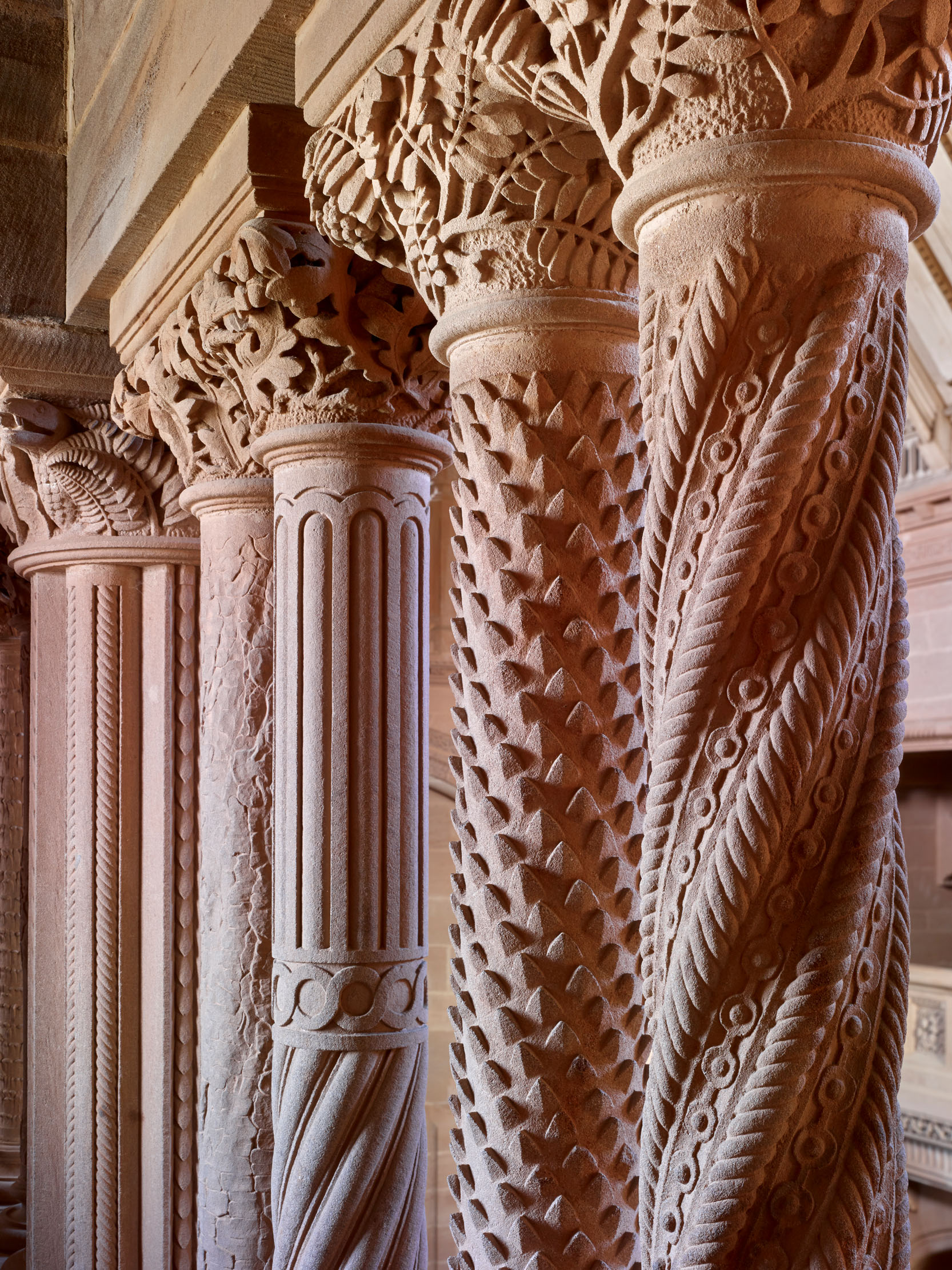
The chapel is rectangular in plan, with three corner towers and entered from the east, an inversion of the usual orientation of a chapel or church. All the towers are of different design and their close placement makes the whole structure read like a compact and richly decorated tower house. The details are drawn from Scottish example; illustrated publications such as The Baronial and Ecclesiastical Antiquities of Scotland (1845–52) by R. W. Billings had already constituted a canon of Scottish historic buildings for revival architects to harvest for ideas. Implicit in the design is the common 19th-century view that such forms were capable of free adaptation to make them appropriate for modern use.
Sign up for the Country Life Newsletter
Exquisite houses, the beauty of Nature, and how to get the most from your life, straight to your inbox.
Dominating the external composition are the two western towers. The lower stages of both incorporate a vaulted chamber with a bell-shaped roof. These structures — at once self-contained yet integral to the whole design — are effectively mausolea that contain the two pairs of tombs. The tower over the north-east mausoleum culminates in an open spire clearly modelled on that of King’s College Chapel, Aberdeen, a flourish that identifies it as the burial place of the Allan-Frasers. Elizabeth’s parents lie beneath its slightly lower and simpler counterpart.
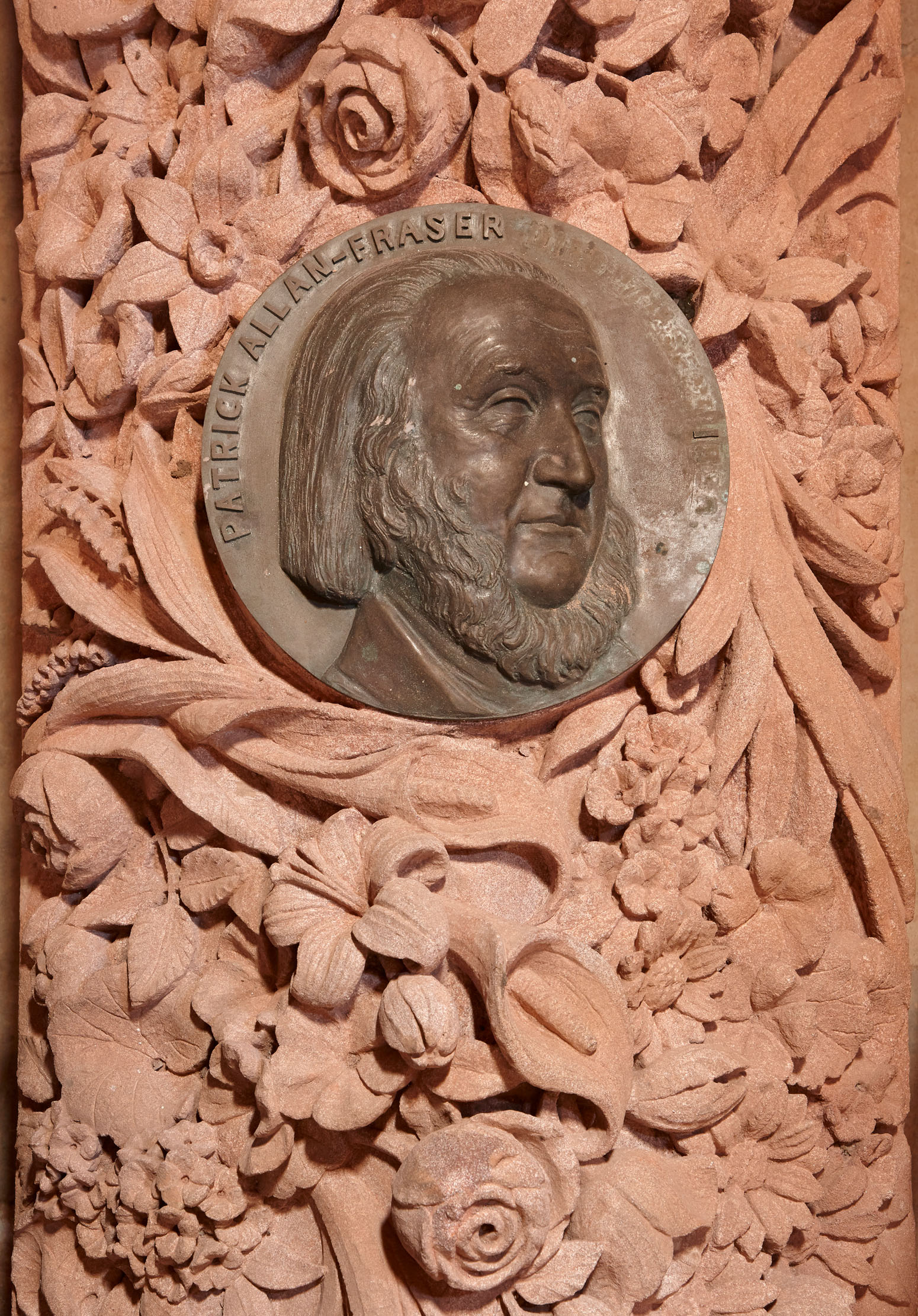
There is a timepiece on both towers. The one at the north-east is a clock and that to the south-east a sundial, the latter devised by the Arbroath meteorologist Alexander Brown. A bell was also installed for sounding the funeral tocsin.
Along both sides of the mortuary chapel are arched loggias that support galleries linking the western towers with the east or entrance front. This front is flanked by the third tower, which is ornamented with corner turrets like a castle, a treatment that was presumably intended to differentiate it from the mausoleum towers. It incorporates a female figure of Peace and a large, domed statue canopy with a figure of Christ as a prisoner standing before Pontius Pilate. Around the rim of the canopy is a depiction of a Scottish funeral, with the mourners in traditional costume. Carved in the base is the date 1880.
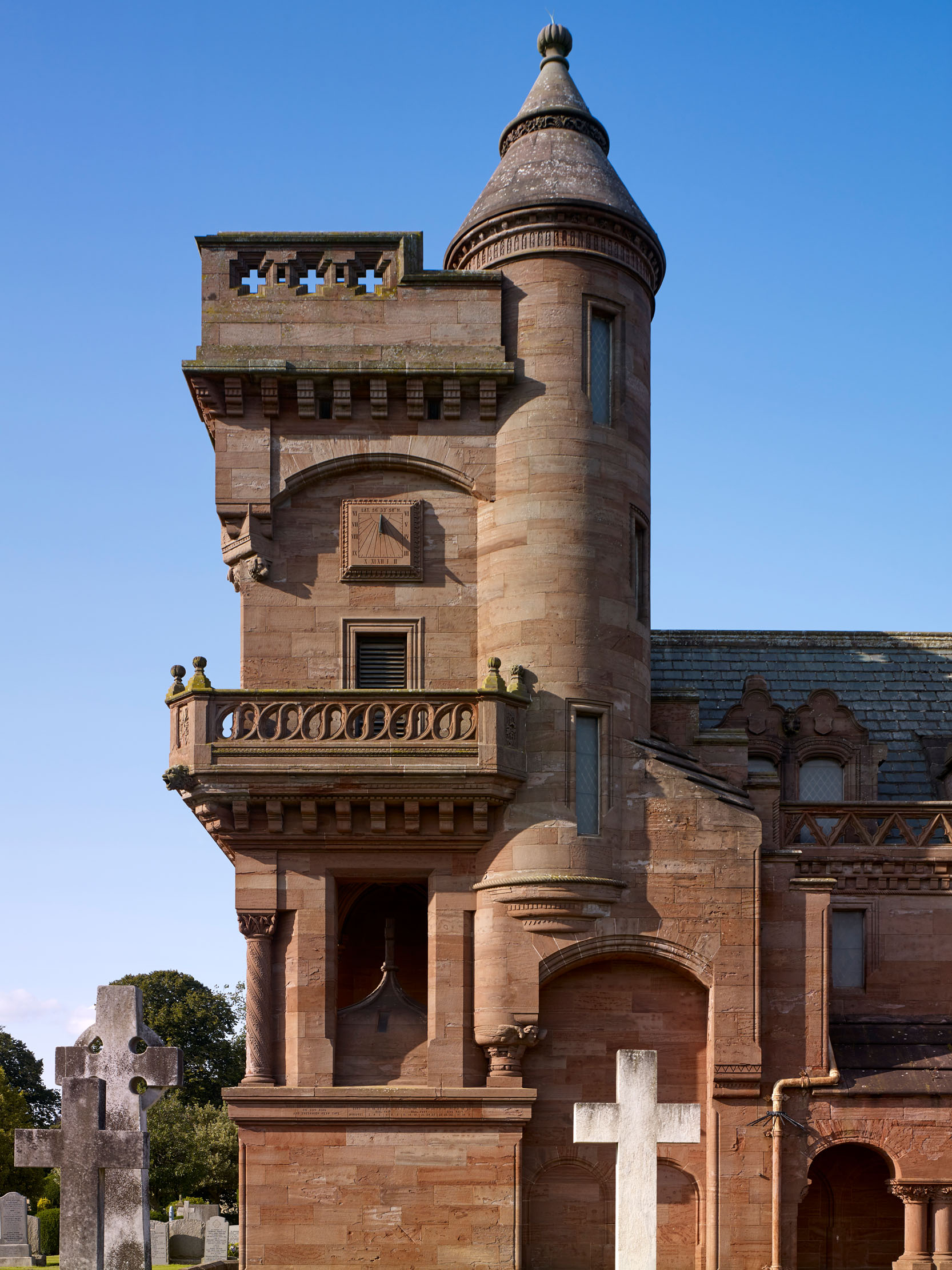
The visitor enters the building through a vaulted entrance lobby. To the right is a generous stair to the gallery and a much larger door straight ahead opens into the chapel itself. In contrast to the exterior, this space is not obviously Scottish at all, unless the sheer wealth of applied carving and ornament makes implied reference to the great 15th-century chapel of Rosslyn, Midlothian.
It is a monumental interior three storeys high, with the walls and roof stepping inwards in ornamented stages from the floor. The lowest register of carving is possibly inspired by the treatment of the surviving west front of Arbroath Abbey with its deep corbelling. To the rear and sides, the walls broaden to accommodate inward-looking galleries at first-floor level.
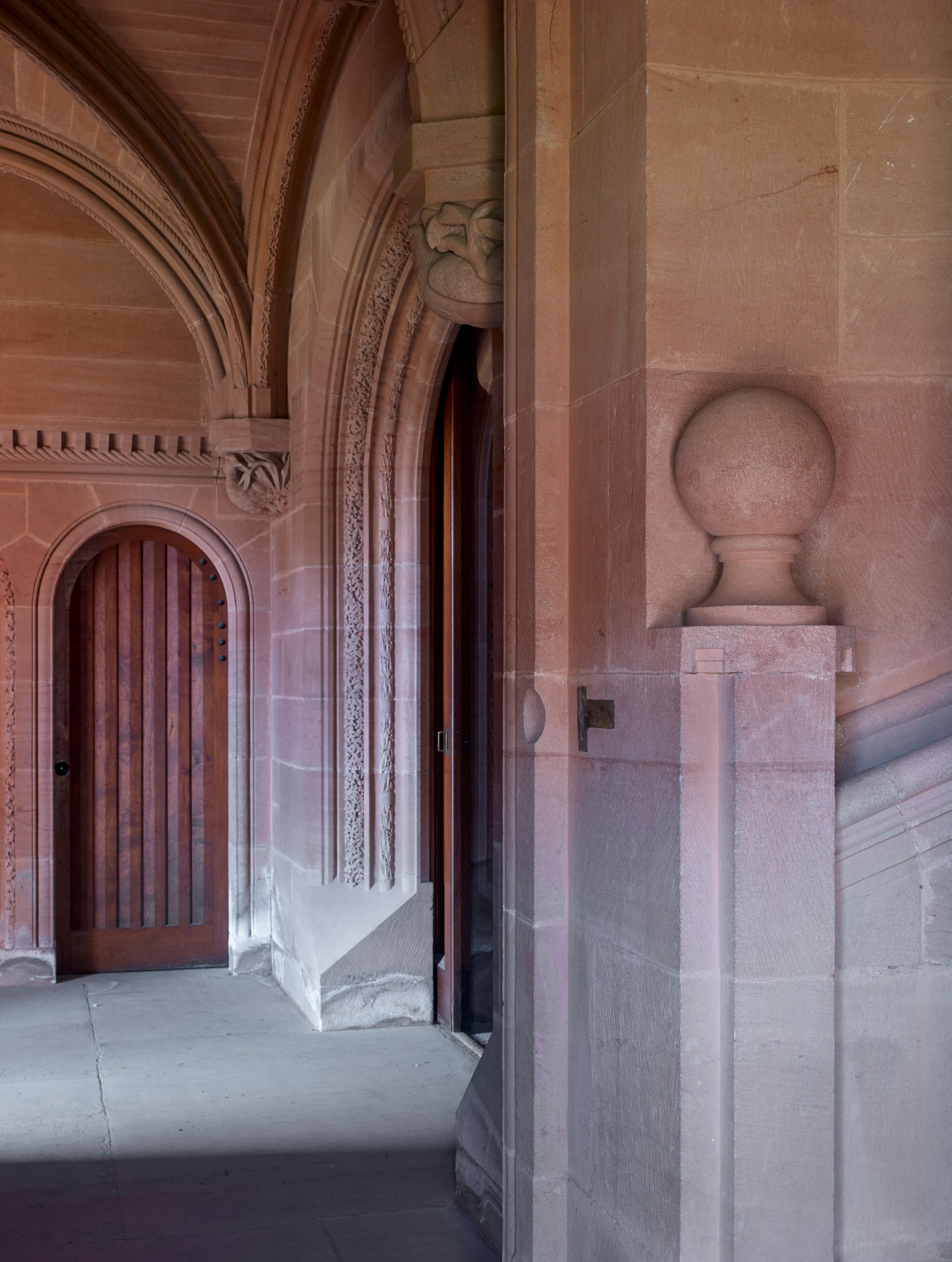
There are strikingly few structural arches in the main volume of the interior, so the eye is carried along rather than upwards. At first glance, every detail appears to be of stone. In fact, the boldly panelled ceiling is of cedar, a material that has aged — as was presumably intended — to a similar colour as the masonry. But for the astonishing profusion of carving, the space might be read as a primitive work of vaulted architecture, such as a passage tomb or ancient Irish chapel.
Windows in the upper storey of the side walls are concealed from the ground by the depth of the wall and effectively top-light the whole space. That makes the arrangement of windows that confronts the entering visitor in the western gable all the more striking. In its centre is a large rectangular opening, which casts light on an altar-like plinth immediately below. This is a rest for coffins and the timber top rotates to facilitate their lifting and removal. In the wall above this, towards the apex of the gable, is a cruciform window that dominates the entire space.
The chapel is internally divided between an eastern nave, laid out with benches, and a western chancel in the area around the coffin rest. Significantly, there is no altar, only a small dais of black marble beyond it at the far end of the interior. The division between the nave and chancel is visually demarcated by additional spiral shafts applied to the elevation of the building and a slight projection within the walls. Several Biblical quotations are carved into the fabric.
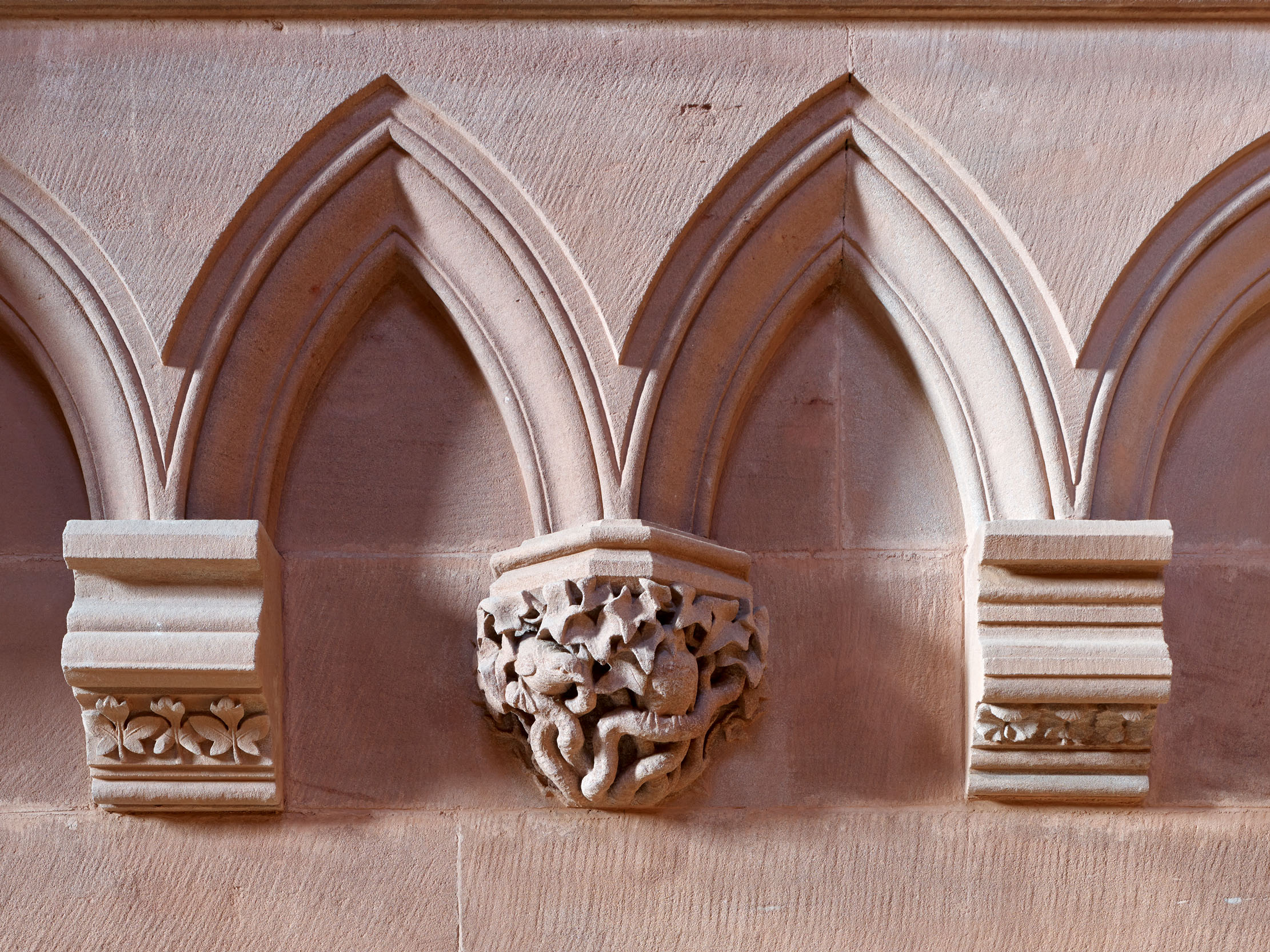
To either side of the coffin stand there are recesses in the wall for seating male members of the deceased’s family. Above are balconies that one description in the Dundee Courier of May 10, 1885 notes as being curtained ‘for lady mourners’; it goes on to say that there was space in the gallery over the marble dais for a choir. These elevated spaces are interconnected and richly ornamented with sculpture. The colonnades were perhaps inspired by the example of Cosmati cloisters in Rome, which must have been well known to Allan-Fraser through his travels and work.
There are numerous naturalistic carvings of plants, animals and birds, too. This theme is surely derived from Ruskin and his belief that the source of all true beauty is Nature itself, an idea, of course, that was taken up by the Arts-and-Crafts Movement. How telling that William Morris, leader of the movement, founded his company to furnish domestic interiors — famous among other things for its fabrics with stylised floral decoration — in 1861, the same year that An Unpopular View of our Times was published, and that the firm assumed its familiar name Morris & Co in 1875, the year the chapel was begun.
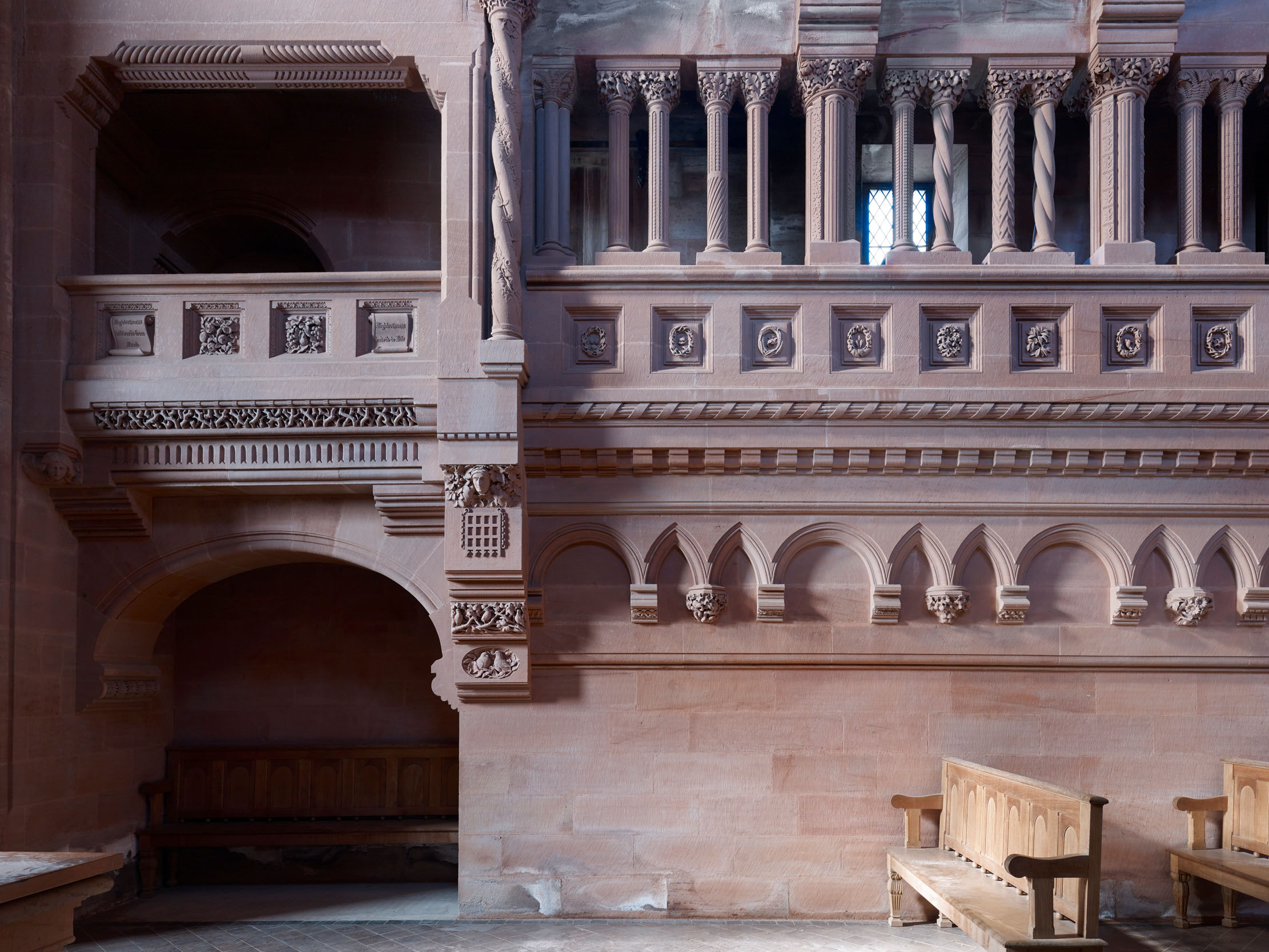
Both mausolea are entered through facing doorways carved with foliage on either side of the marble dais. A carved panel over each doorway bears the respective initials of the deceased, as do the sliding ironwork grills that screen each opening. There are also sliding doors, a second layer of security. These small, vaulted spaces are toplit by slit openings and the boss over Allan-Fraser’s monument is carved with the date 1875.
Laid on the ground in each are a pair of grave slabs. These massive blocks of stone are nearly the depth of a coffin and inset with bronze medallion portraits of the deceased. Around the portraits are great swathes of flowers, exquisitely frozen into stone.
The mausolea received their first burials on August 4, 1879, five years before the chapel was complete. That morning, the bodies of Elizabeth and her parents were exhumed from Arbroath Abbey for reburial. The following day, the Dundee Courier reported that the exhumation took the town by surprise and that the bodies had originally been interred in lead coffins, with the evident intention of future removal.
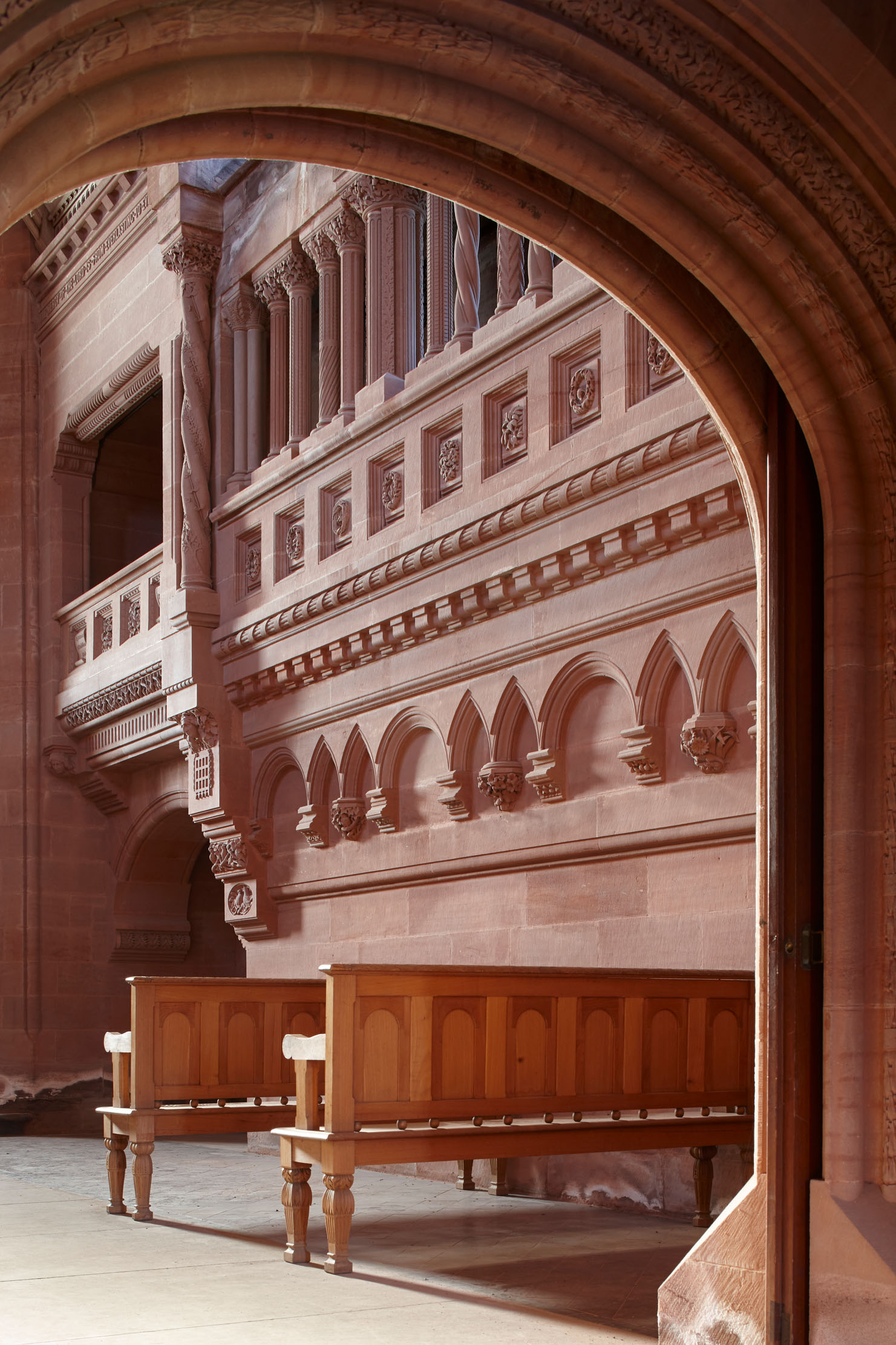
Given that Elizabeth’s mother died in 1851, this detail implies that the funerary chapel, or some kind of memorial, was long planned. Allan-Fraser was himself buried here on September 22, 1890, in a suitably splendid and well-attended funeral, replete with choristers. The service was conducted according to the rites of the Episcopal Church, to which he had belonged.
In his declining years, Allan-Fraser planned for the long-term future of the chapel. Having bought the land to construct it, he gave the building back to the town in 1886, with the direction that it could be used for funeral services. Curiously, he also explicitly forbade the chapel ‘to be thrown open at any time to the public as a place of exhibition’.
Allan-Fraser’s chapel was never very intensively used and, in recent years, has stood redundant. Ambiguities over financial responsibility for repairs have also created difficulties and, in the past 30 years, some of the ironwork that surrounded the building has been stripped away as part of the maintenance of the cemetery. Attitudes towards it, however, are happily changing.
The chapel has now been leased to the Allan-Fraser Trust that runs nearby Hospitalfield and there are plans afoot to open and use it. This is a very welcome initiative. After all, the building is not only fascinating, magnificent and manifestly important, it’s also rooted absolutely in Arbroath: it was designed by a son of the town, constructed by a local workforce using stone quarried from the immediate area and intended for use by the populace. Indeed, it is hard to bring to mind a building that more completely captures a moment in the history of a single place so perfectly. It deserves not only future care, but national renown.
Acknowledgements: Mary Miers, Scott Byrne and John Sanders
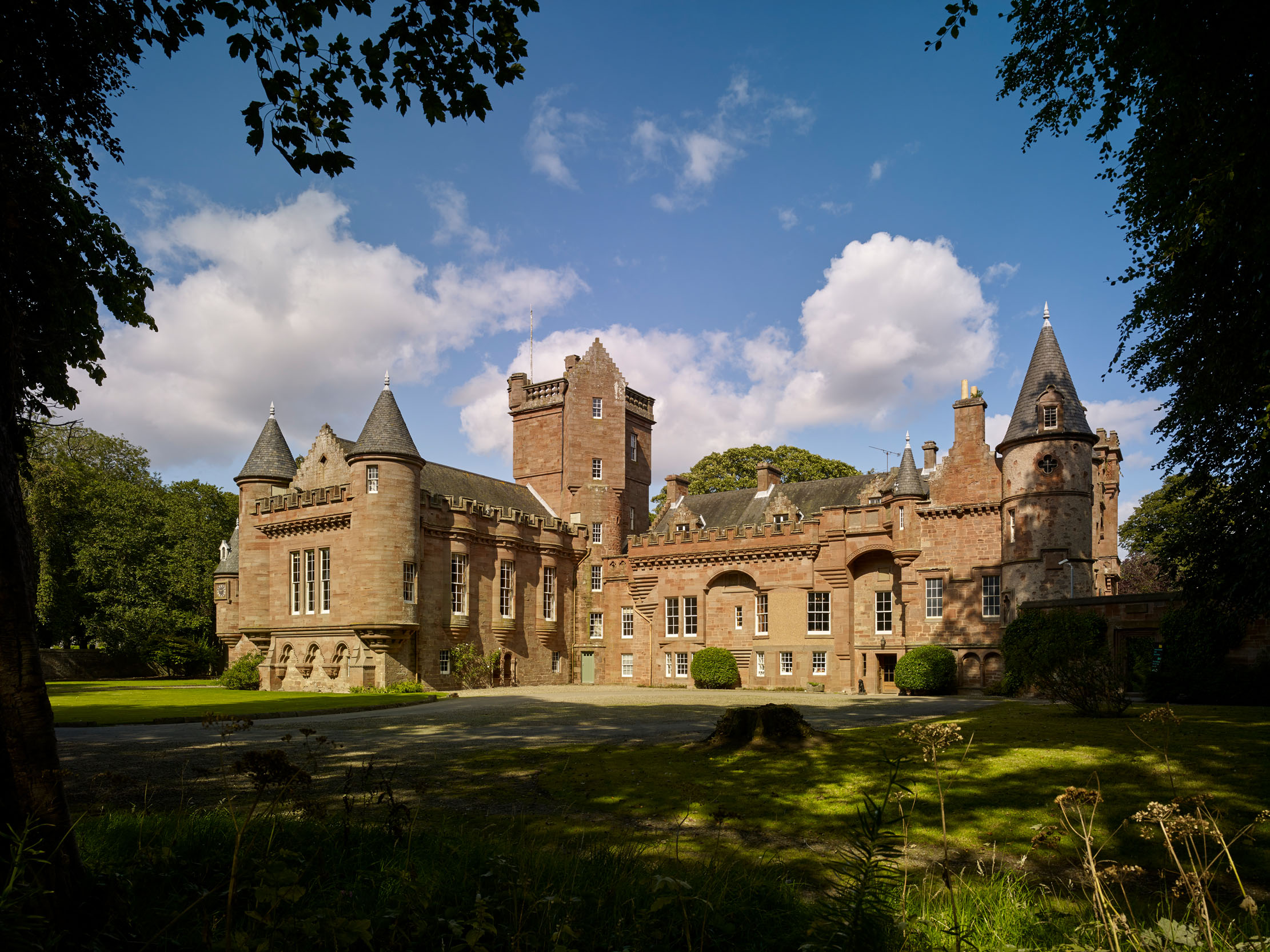
Hospitalfield: The Victorian creation of a visionary patron of the arts
Replete with late-Victorian collections and furnishings, Hospitalfield, Angus — the property of the Patrick Allan-Fraser of Hospitalfield Trust — is
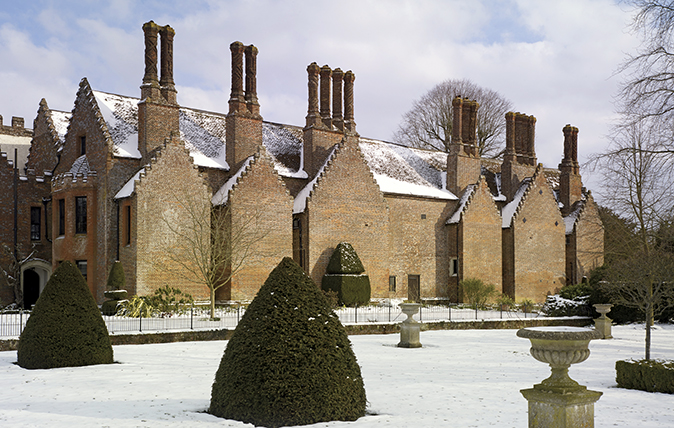
Chenies Manor, Buckinghamshire: The Tudor estate that encompasses the ancient oak tree beneath which Elizabeth I lost a piece of jewellery
This Tudor house was the unlikely venue for the first meeting of the founding group of The Arts Society. John
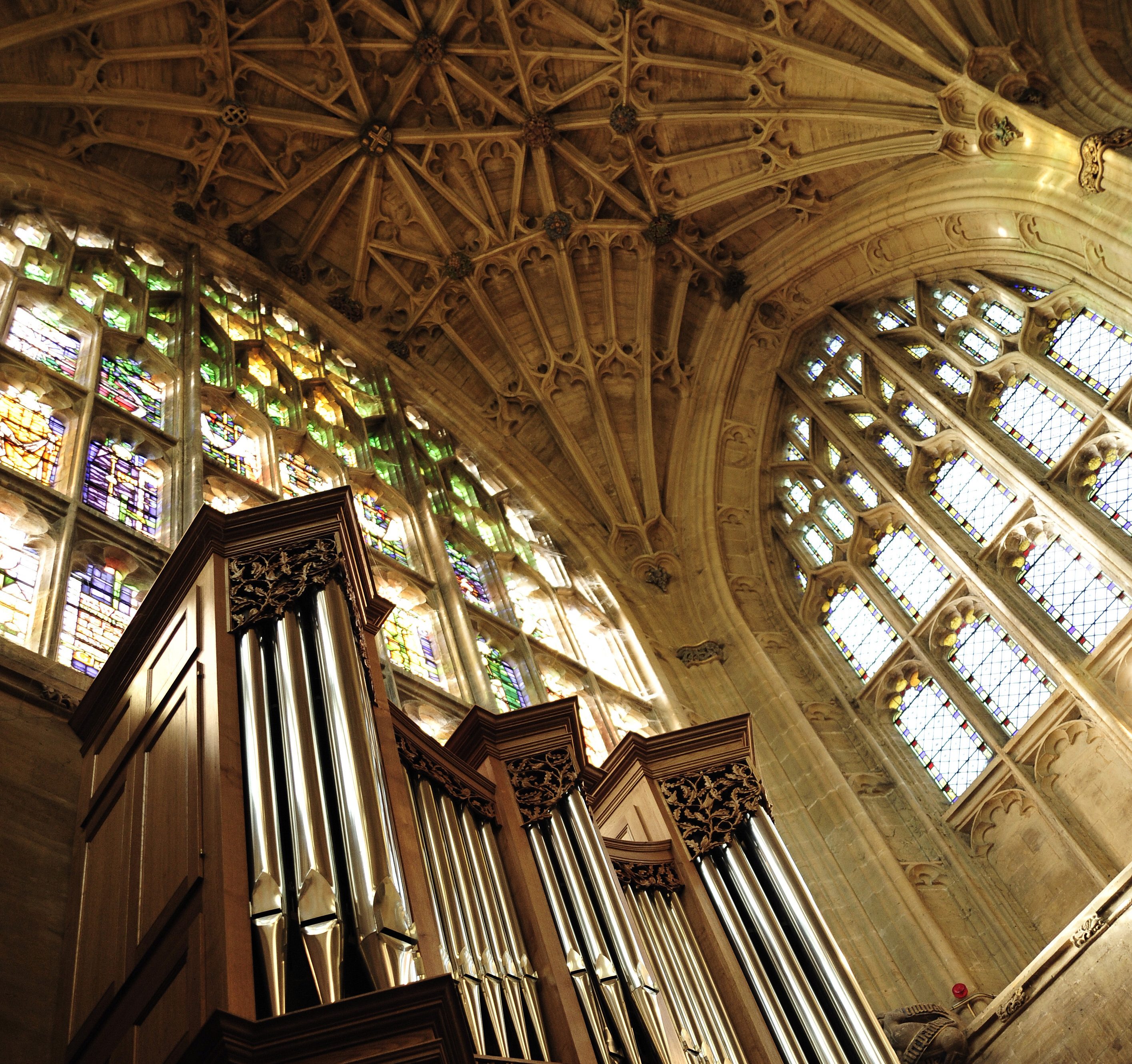
Sherborne Abbey's stained glass: The spectacular Victorian addition to a building with 1300 years of history
The spectacular stained glass at Sherborne Abbey is only part of what makes this building one of the grandest in

John spent his childhood in Kenya, Germany, India and Yorkshire before joining Country Life in 2007, via the University of Durham. Known for his irrepressible love of castles and the Frozen soundtrack, and a laugh that lights up the lives of those around him, John also moonlights as a walking encyclopedia and is the author of several books.
-
 'To exist in this world relies on the hands of others': Roger Powell and modern British bookbinding
'To exist in this world relies on the hands of others': Roger Powell and modern British bookbindingAn exhibition on the legendary bookbinder Roger Powell reveals not only his great skill, but serves to reconnect us with the joy, power and importance of real craftsmanship.
By Hussein Kesvani
-
 Spam: The tinned meaty treat that brought a taste of the ‘hot-dog life of Hollywood’ to war-weary Britain
Spam: The tinned meaty treat that brought a taste of the ‘hot-dog life of Hollywood’ to war-weary BritainCourtesy of our ‘special relationship’ with the US, Spam was a culinary phenomenon, says Mary Greene. So much so that in 1944, London’s Simpson’s, renowned for its roast beef, was offering creamed Spam casserole instead.
By Country Life